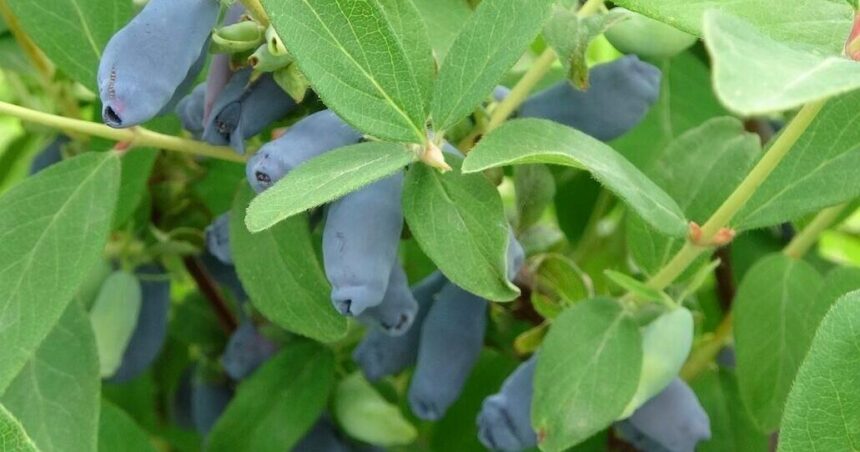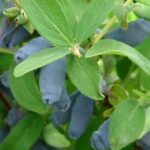An edible blue honeysuckle berry called the haskap has emerged in recent years as a potential new superfood, but little scientific research has been done to investigate how the berries contribute to human health.
Now, a research partnership at Montana State University aims to learn more about the potential health benefits of haskap berries while also learning how to best cultivate them to maximize those benefits.
Mary Miles, professor in the Department of Food Systems, Nutrition and Kinesiology, and Zach Miller, superintendent of MSU’s Western Agricultural Research Center in Corvallis, serve as co-project leaders for the research project. The project is supported by an $800,000 grant from the U.S. Department of Agriculture’s National Institute of Food and Agriculture, or NIFA. Other project partners at MSU include researchers Brian Bothner, Seth Walk, Carl Yeoman, Andrej Svyantek, and Zhuoyu Wang.
People are also reading…
A research partnership at Montana State University aims to learn more about the potential health benefits of an edible blue honeysuckle berry called the haskap while also learning how to best cultivate them to maximize those benefits.
Haskap berries are also known as honeyberries, yezberries, and blue honeysuckle. They have anti-inflammatory properties and are rich in polyphenols, which are found in many plant foods and act as antioxidants. Haskaps may also have other untapped health benefits, Miles said.
Miller noted that if demand for the berries increases, Montana farmers could have a great opportunity to help fill that demand.
“These berries thrive in our cold climates,” Miller said. “In our research farm, we can produce four to five tons of berries per acre with the right varieties and management, and they can be machine harvested.”
As part of the research, Miles and a group of doctoral students will investigate how haskap berries’ bioactive components — molecules found in many foods that can interact with other living components to promote good health — interact with the ecosystem of microbes that live in humans’ intestines, often referred to as the gut microbiome.
The researchers will conduct an eight-week clinical trial with 120 participants. Half of those participants will meet at least two criteria for metabolic syndrome – a cluster of conditions that increase the risk of heart disease, stroke, and diabetes – and the other half will not meet any criteria for metabolic syndrome. Half of the participants will consume a food product each day that contains haskap berries, while the other participants will consume a similar product that doesn’t contain haskaps.
The researchers will then compare the gut microbiome and health impacts of haskap berry consumption between the metabolically healthy and metabolically unhealthy groups. Miles said their hypothesis is that haskap berries will lower inflammation and improve metabolic health.
Miles said berries high in polyphenols have been found to promote human health in a variety of ways, including through lowering inflammation, that may be dependent on interactions with the gut microbiome.
Miles, who for years has studied the gut microbiome and its impact on human health, noted that inflammation and abnormal metabolism play a major role in the development and progression of many diseases, including Type 2 diabetes, cardiovascular disease, and cancer. Because of that, she said, identifying foods that decrease inflammation and improve metabolism is an important strategy for reducing disease. Miles and her partners’ previous research suggested the microbes digesting polyphenols may contribute, in part, to lowering levels of inflammation in people.
On the production side of the project, Miller and other plant scientists at the Western Agricultural Research Center – part of MSU’s Montana Agricultural Experiment Station – will investigate the effects of harvest timing on the concentration and yield of health-promoting compounds in more than 20 varieties of haskap berries.
“We aim to identify which haskap varieties and growing practices increase content of health-promoting compounds and, ultimately which of these would give growers the most antioxidants per acre,” Miller said. “Our goal is to identify what to plant and how to farm for the greatest potential health impacts.”
The work builds on previous research at WARC related to haskaps, including work evaluating numerous haskap varieties for yields, flavor, aesthetic qualities, and cold-hardiness. More information on haskap research at WARC is available on its website.
Ultimately, Miles said, she and her research partners hope their work will have real impacts on human health.
“We know a lot about nutrition, but one thing we don’t know is why we don’t all get the same benefits from healthy foods or the same negative health impacts from unhealthy foods,” Miles said. “We want to understand this more so that we can match people’s health goals to potential foods that would really work best for them.”





